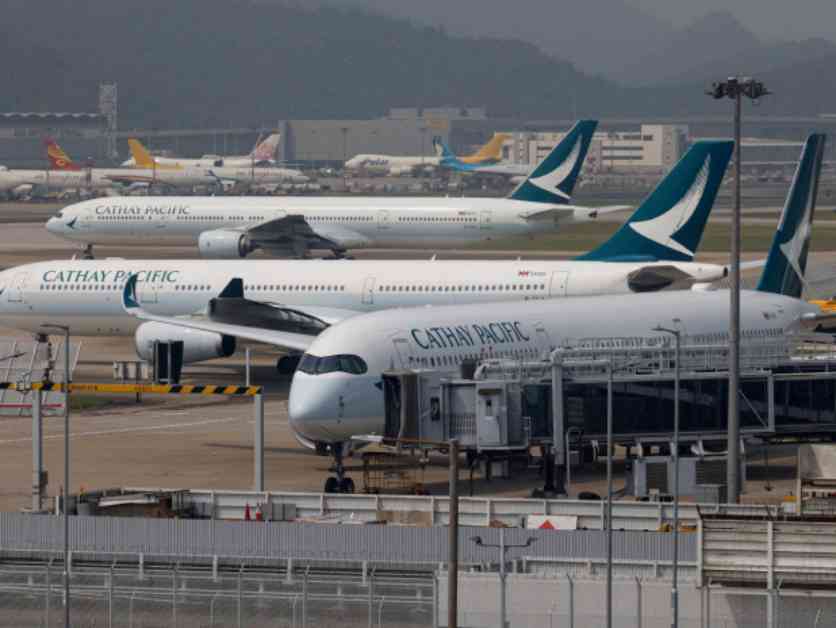A350 Engine Defect Puts Maintenance in the Spotlight
In a recent incident that has put a spotlight on aircraft maintenance procedures, a Rolls-Royce engine fire on a Zurich-bound Cathay Pacific plane raised concerns about potential defects in the engine. Warren Chim, a spokesman for the Aircraft Division of the Hong Kong Institute of Engineering, suggested that maintenance procedures might have played a role in the incident. Chim’s remarks came in the wake of the Air Accident Investigation Authority’s statement that the defect on Flight CX383 could have led to a more serious fire, posing a risk of extensive damage to the aircraft.
Chim’s suspicions were based on the discovery of ruptured fuel hoses in the fuel manifold of the Rolls-Royce engine, as well as an emergency airworthiness directive issued by the European Union Aviation Safety Agency (EASA). This directive highlighted the potential risks associated with a specific cleaning process utilized during engine refurbishment, which could lead to fuel manifold main fuel hose degradation. The incident on CX383 prompted EASA to issue an airworthiness directive for Rolls-Royce Trent XWB engines installed on Airbus A350 aircraft, superseding a previous directive issued just days prior to the incident.
Implications of the Incident
The engine fire on the Cathay Pacific plane not only raised concerns about the safety of the A350 fleet but also had significant repercussions for the airline. Following the incident, Cathay Pacific was forced to cancel dozens of flights and ground its A350 fleet for inspection. This disruption not only resulted in financial losses for the airline but also caused inconvenience for passengers who had their travel plans disrupted.
The incident also highlighted the importance of stringent maintenance procedures and oversight in the aviation industry. As aircraft technology continues to advance, ensuring the safety and reliability of aircraft engines is crucial to preventing potentially catastrophic incidents like the one experienced by Cathay Pacific. The investigation into the engine fire on Flight CX383 serves as a reminder of the need for constant vigilance and adherence to strict maintenance protocols to safeguard the integrity of aircraft operations.
Lessons Learned and Future Precautions
In the aftermath of the incident, aviation authorities and airlines alike have been taking steps to prevent similar occurrences in the future. Enhanced inspection protocols, revised maintenance procedures, and increased oversight of engine refurbishment processes are among the measures being implemented to mitigate the risk of engine defects. Manufacturers like Rolls-Royce are also being called upon to review and revise their cleaning methods to address potential vulnerabilities in the fuel manifold system.
The incident on CX383 has underscored the importance of collaboration between regulators, manufacturers, and airlines to ensure the safety and airworthiness of aircraft. By sharing information, conducting thorough inspections, and implementing corrective actions, stakeholders in the aviation industry can work together to prevent accidents and uphold the highest standards of safety. The lessons learned from this incident will serve as valuable insights for future maintenance practices and regulatory frameworks.
As the investigation into the engine fire on the Cathay Pacific plane continues, the aviation industry remains focused on identifying and addressing potential risks associated with engine maintenance and refurbishment. By prioritizing safety, transparency, and accountability, stakeholders in the industry can uphold the trust and confidence of passengers and ensure the continued success of air travel.



















